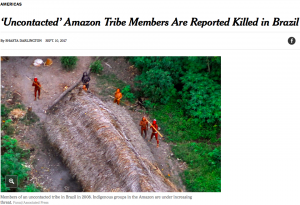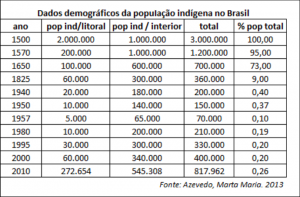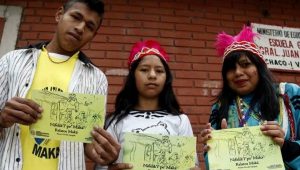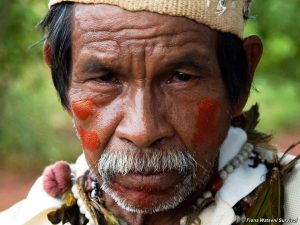This Monday we passed out our HAPs for Wednesday, September 13. The History department will host a dinner/social gathering event at Bornhuetter pavilion from 5-7 p.m on Wednesday, September 13. Emily presented her LA Culture blog post. Titled “Indigenous woman in politics: a complex proposition”, Eufrosina Cruz Mendoza was an indigenous woman who broke social norms of an indigenous woman running for office in Mexico. Emily connected this to a broad class theme of P.O.V. Eufrosina is viewed as corrupted/unfit for some, but for others she’s a hero. For a long time women and indigenous people are believed to be unfit for leadership roles in their communities, so this woman’s status in her community causes a lot controversy to conservatives in Mexico.
We briefly discussed the massacre in Brazil of an indigenous amazonian group. We have our own biases and when we look at groups like these, we see how we can look at the un-contacted people similarly to the Europeans. We both objectively look at clothing/nudity, as a marker for civilization.

We looked at the first paper guidelines. We are to use a primary source and through our own interpretation we will analyze a secondary source to form an argument on the primary source we were started with. There are 3 available sources.
- Columbus’ “Letter to the King & Queen of Spain” (1494)
- Pedro Vaz de Caminha, “Letter to the King of Portugal” (1500)
- Martin Waldseemüller, Universalis cosmographia, (1507)
Paper is due September 22 at noon. We will submit this as a pdf to Moodle and Professor Holt will grade it online as well. Use the writing center. Professor Holt Encourages it. Use Zotero, all the cool historians use it! Ask library if you need any help. Peer-review is encouraged. Rubrics have been passed out.
We split up into small groups. Discussed our weekly words and talked about the culture and atmosphere of the Caribbean in the late 15th century. Some important statements were about the social structure revolved around various forms of art. The economy is marine based, people from the Caribbean would establish trade relations with main-land people more often than not. We then turned to a big group and discussed the map of the Caribbean and why its geographical location affected the people and culture there. The articles mentioned ceramics and stones that remained on the island. They also talked about material culture, tools, artifacts and value they placed on them. There seems to be more material culture because written language was not there. Also, because the region is so hot, humid, and wet, many artifacts cannot be preserved. Many storms would destroy vessels and various settlements on the islands. (Look at Hurricane Irma of this past week) We shifted our focus to Brazil and compared the demographics of Native Americans from then to now. We look at the sharp decrease in population sizes after the contact with Europeans. Coastal people were more susceptible to plague and violence because of their relative distance to the shore. That explains why interior people populations did not fall at such a steep decline.

We ended our conversation by touching back on our original theme of the class: European agency thought this era. On these islands we find literal traces of colonialism in DNA records. Many natives of these islands have lineage to Native American women. We remind ourselves that women were subjected to a lot of physical and sexual abuse by European men. We have to account and acknowledge that not only were these white European males colonizing the land, but these use sexual assault as warfare for the women who also resisted.
References:


